Extra Strength Bed Bug Spray 128 oz + XL Unisex Coveralls Bundle
$81.98 Original price was: $81.98.$73.78Current price is: $73.78.
Take back your sleep with the Extra Strength Bed Bug Spray 128 oz and XL Unisex Adult Coveralls Bundle. The large, plant-derived spray handles seams, frames, baseboards, and travel gear, while the disposable coveralls keep your clothes protected during treatment. Pair your targeted spraying with a simple high-heat dryer routine for about 30 minutes to kill bed bugs and eggs on washable items, then store clean textiles in sealed bags for peace of mind. Interceptor monitors under bed legs help you verify progress faster than visual checks alone.
Description
Sleepless nights and mystery bites do not have to run your home anymore. The Extra Strength Bed Bug Spray (128 oz) and XL Unisex Adult Coveralls (1 Pack) Bundle pairs a family-first, plant-derived contact spray with protective disposable coveralls so you can treat mattresses, frames, baseboards, and travel gear while keeping your skin and clothes shielded during application. This bundle fits right into an integrated plan that uses targeted spraying, smart laundering, and heat for fabrics, which agencies and university extensions recommend for dependable results.
Key Customer Benefits
- Family-first control that fits real life. The 128 ounce natural bed bug treatment gives you enough plant-derived contact spray for beds, sofas, baseboards, and a second pass a week later, which aligns with integrated pest management advice to combine targeted spraying with heat and housekeeping. University and EPA guidance emphasize hot drying for fabrics and an IPM plan rather than chemicals alone, so this bundle pairs neatly with what actually works in homes.
- Protects you while you work. The XL disposable coveralls keep your clothes and skin covered during inspection and treatment. EPA’s PPE guidance for handlers calls out the value of protective garments and proper disposal if heavily contaminated, which builds safe habits even when you are using a minimum-risk, plant-based formula.
- Kinder to households with kids and pets when used as directed. Many natural bed bug sprays use EPA 25(b) minimum-risk active ingredients such as peppermint oil, cedarwood oil, or geraniol. These ingredients are exempt from traditional registration because of their low risk profile when used according to label directions, which is reassuring for family areas, nurseries, and pet zones. Always follow the exact label.
- Designed to partner with heat so you actually break the cycle. Drying clean textiles on high heat for about 30 minutes is an EPA-listed way to kill bed bugs in bedding and clothes, and CDC sets hot-cycle expectations for lice and similar pests at about 130 degrees Fahrenheit. Your large bottle handles the hard-to-wash zones while your laundry routine tackles fabrics, so you cover both fronts.
- Works across mixed pest situations. If you are dealing with lice on linens or the occasional flea from a pet blanket, the same hot-wash and high-heat dryer workflow applies, while the contact spray helps on seams and flooring transitions. Public health and medical sources converge on hot water at roughly 130 degrees Fahrenheit and high-heat drying for these pests, which keeps your protocol simple.
- Sets you up for follow through and monitoring. Because you will have product left after the initial pass, you can re-inspect and spot treat after laundering, then add monitors such as interceptor cups under bed legs to check progress. Extension studies show pitfall-style interceptors outperform casual visual checks, which speeds up decisions about what to do next.
Product Description
What this bed bug treatment bundle is
This kit pairs a 128 ounce natural bed bug treatment with XL disposable coveralls so you can treat hard-to-wash places while keeping your clothes and skin protected. The spray is designed for contact use on seams, tufts, bed frames, headboards, baseboards, luggage, and car seats.
The coveralls add a clean barrier during inspection and application, which is exactly the kind of practical protection EPA worker-safety guidance recommends for pesticide handlers and home users who want safer habits. If any garment is heavily contaminated, the guidance is to discard it rather than try to salvage it.
How it works alongside proven IPM steps
On their own, bed bug sprays do part of the job. The reliable results come when you run a simple integrated plan, often called IPM. EPA’s bed bug pages spell it out clearly, that successful control usually combines non-chemical steps such as hot drying, encasing mattresses, and reducing clutter, plus targeted insecticide use where bugs hide.
Your 128 ounce bottle covers the cracks, seams, and furniture joints you cannot put in a washer, then your laundry routine handles sheets, pillowcases, and soft goods. For fabrics, public health sources specify hot water at about 130 degrees Fahrenheit and high-heat drying. This temperature guidance is widely used for lice management and the hot dryer step is also recommended in EPA’s do-it-yourself bed bug advice.
Why heat and a contact spray pair so well
University extension work led by entomologists shows that a household dryer on high can kill all bed bug life stages, including eggs, in roughly 30 minutes when the drum is loosely filled. That means you can quickly sanitize clean textiles, then return them to a made-safe room while you focus the spray on frames, tufts, and baseboards. Using the dryer for textiles and the spray for hard surfaces closes both sides of the loop, so you are not chasing survivors from one surface to another.
What makes this approach effective and different
Many family-first bed bug formulas use EPA 25(b) minimum-risk active ingredients such as essential oils or food-grade substances. EPA maintains the official lists of eligible active and inert ingredients for these products. While peer-reviewed research notes that essential oils act primarily as contact killers and can be less potent than traditional residuals, they still have a role when used correctly as part of IPM, especially for sensitive areas and quick knockdown on sighted bugs.
Your large format bottle is practical because it supports repeat passes after inspections, laundering, and encasement work. Your coveralls help you stay clean while moving between rooms and handling bagged laundry, which reduces the chance of hitchhikers on your street clothes. For ongoing checks, pitfall-style interceptors under each bed leg improve detection sensitivity compared with casual visual inspections, so you can see progress week by week.
Product Specifications
| Spec | Extra Strength Natural Bed Bug Spray, 128 oz |
|---|---|
| What it is | Water-based, plant-derived contact spray for seams, tufts, bed frames, baseboards, luggage, and other hard-to-wash sites. Designed to be part of an IPM plan that includes high-heat dryer cycles for fabrics. EPA and university extensions advise high heat in a clothes dryer for about 30 minutes to kill bed bugs and eggs. |
| Typical active ingredients used by Minimum-Risk sprays | Examples that appear on EPA’s 25b eligible actives list include cedarwood oil, peppermint oil, geraniol, eugenol, and others. Always check your product label for the exact active and its percentage. |
| How it works | Primarily contact action. Natural formulations with terpenoids like geraniol and eugenol can kill or repel on contact. Efficacy varies by formulation, which is why you combine the spray with heat, encasements, and monitoring. Peer-reviewed work shows some essential-oil products perform, while others are weaker, so technique and follow-through matter. |
| Bottle size | 128 fluid ounces total volume. |
| Coverage guide | Coverage depends on label rate, sprayer output, and target surfaces. Many pesticide labels give rates per 100 or 1,000 square feet. As an example only, if a label called for 2 ounces of solution per 1,000 square feet and you were treating 750 square feet, you would mix about 1.5 ounces of product into water to make the required volume. Always follow your label for exact rate and do not exceed it. |
| Intended use sites | Mattresses and box springs on seams and tufts, bed frames, headboards, furniture joints, baseboards, and travel gear that cannot be laundered. Pair with hot dryer cycles for bedding and clothes. |
| Fabric and construction | Not fabric. Liquid formulation. |
| Safety and PPE | Even with Minimum-Risk products, use smart PPE. Wear gloves and protective clothing. Ventilate and keep people and pets out until surfaces are dry. Use and storage must follow the label. |
| Heat and laundering | Do not rely on washing alone for bed bugs. Run clean textiles in a clothes dryer on high for about 30 minutes. For room or item heat treatment outside the dryer, extension guidance cites at least 120 Fahrenheit for about 90 minutes to ensure eggs are killed. |
| Monitoring compatibility | Works well alongside pitfall-style interceptors under bed legs, which outperform casual visual checks for detecting low-level activity. |
| Regulatory notes | If your spray is marketed as Minimum-Risk, it falls under 40 CFR 152.25(f). That category is exempt from federal registration, but products must use only eligible active and inert ingredients and still must follow all label directions. |
How to Use, Step by Step
Before you start, set up the room and your safety basics
Put on the XL disposable coveralls over your regular clothes, plus gloves and closed shoes. Protective garments reduce contamination on street clothes and build safe habits around any pesticide use. If a suit ever becomes heavily contaminated, discard it rather than trying to wash it.
EPA’s PPE guidance and legal standards spell out how coveralls are defined and when to dispose of contaminated items, and university fact sheets advise washing any pesticide-exposed clothing separately. Ventilate the room, keep kids and pets out until treated surfaces are dry, and follow the product label exactly.
Step 1. Isolate bedding and soft goods, then use heat correctly
Bag up sheets, pillowcases, blankets, and recently worn clothes. You do not need to rewash everything if it is already clean, but you do need reliable heat. Run a clothes dryer on high for about 30 minutes for a loosely filled load, which kills all bed bug life stages, including eggs. If you also wash, use hot water and then high heat drying. University and EPA guidance are consistent on this point. Store clean items in sealed bags so they stay bug-free until the room is finished.
Lice on linens follow a similar heat rule. Public health guidance recommends hot water at about 130 degrees Fahrenheit and high-heat drying for items used in the two days before treatment. That is useful if your home has overlapping issues such as bed bugs in furniture and lice on bedding.
Step 2. Declutter, then vacuum slowly and precisely
Reduce clutter so you can see and treat seams and edges. Vacuum mattresses, box springs, bed frames, furniture joints, and baseboards slowly, then empty the vacuum outdoors. Vacuuming does not finish the job by itself, but it is a core IPM step that removes live bugs and debris before treatment.
Step 3. Inspect the bed and furniture methodically
Look for dark fecal spotting, cast skins, eggs that look like tiny grains of rice, and live bugs. Pay attention to mattress tape edges, tufts, the underside of the box spring, screw holes, headboard backs, and where baseboards meet carpet. An inspection checklist from extensions will keep you systematic and prevents missed harborage.
Step 4. Apply the Extra Strength Natural Bed Bug Spray where it counts
Shake the bottle if the label instructs. Use a controlled line along the mattress tape edge, seams, and tufts, then treat bed frame cracks, slat ends, headboard joints, nightstand undersides, and baseboard edges. Do not soak surfaces. Natural formulations work on contact, so placement and coverage matter more than drenching. Allow to dry fully and ventilate before reentering. EPA’s do-it-yourself guide stresses targeted application and nonchemical steps together for dependable results.
Some items cannot be laundered but can tolerate heat. Extensions note that a dryer with a shelf can treat shoes, backpacks, or toys at high heat for about 30 minutes. Always check the item’s care limits first.
Step 5. Reassemble the bed so bugs cannot climb easily
Return dried bedding to the room and make the bed so sheets do not touch the floor. If you have encasements, install them now on the mattress and box spring to trap any hidden bugs and make future inspections faster. This is a standard IPM move that reduces hiding spots.
Step 6. Add monitors under each bed and sofa leg
Place pitfall-style interceptors or monitors under the legs of beds and seating. Studies from Purdue and Rutgers show interceptors detect activity far better than casual visual checks and can catch low-level infestations that you would otherwise miss. Check cups weekly and record counts.
Step 7. Plan your follow-up calendar
Day 0, treat and dry. Day 7 to 10, re-inspect and spot-treat seams, furniture joints, and baseboards again. Keep running laundry through high heat and keep monitors in place for at least four to six weeks. EPA’s preparation and do-it-yourself pages highlight the importance of repeat inspections, hot dryer cycles, and storage of clean items in sealed bags until the space is cleared.
Optional add-ons that strengthen results
Where safe and suitable, steam can complement contact sprays on seams and fabric edges, since studies show consumer steamers can kill bed bugs with slow passes of roughly ten to thirty seconds per foot. Proceed carefully and avoid moisture that could damage finishes. Encasements for mattresses and box springs and regular vacuuming remain part of the same plan.
Special situations
- Travel returns and thrift finds. Run dryer-safe clothes and soft goods on high for about 30 minutes before they enter closets. Inspect luggage seams and treat hard surfaces. Extensions endorse drying as a practical first step when returning from travel.
- Electronics and delicate items. Do not spray electronics. Bag and hold for inspection or consult a professional heat specialist. EPA notes cold storage can work only at a true zero degrees Fahrenheit for several days, which is hard to guarantee at home.
- Lice or fleas at the same time. Keep the laundry rule simple. Hot water at about 130 degrees Fahrenheit and the hot dryer cycle are recommended by public health guidance, which aligns your routine across multiple pests. Treat pet bedding with heat and follow your veterinarian’s advice for the animal itself.
Aftercare, storage, and disposal
Store the spray in its original container with the label intact and out of reach of children and pets. Never pour leftover product into household drains. PPE that is lightly soiled can often be managed per label and fact-sheet advice, but any heavily contaminated absorbent item should be discarded, and all exposed clothing should be washed separately from household laundry.
Frequency Asked Questions
1) Do bed bugs die in a household clothes dryer, and how long should I run it?
Yes. Guidance from EPA and university extensions says a household dryer on high heat can kill all life stages when items are loosely loaded for about thirty minutes. EPA also reminds that washing alone might not do the job, so prioritize the dryer step and store cleaned items in sealed bags afterward.
2) What temperature and timing are recommended for heat treatment in general?
For room or item heat work beyond the dryer, extension resources cite roughly one hundred twenty to one hundred twenty five degrees Fahrenheit for twenty to thirty minutes, at moderate humidity, to ensure eggs are inactivated. That is why heat partners so well with a natural contact spray on hard to wash sites.
3) Do bed bugs transmit disease to people?
Public health agencies state that bed bugs are not known to transmit diseases to humans. They are still a significant public health pest because bites, anxiety, and costs add up, but transmission of human pathogens has not been demonstrated in real world conditions.
4) Is a natural, plant based bed bug spray actually effective?
Peer reviewed work shows some essential oil based formulations can knock down bed bugs on contact, especially those containing ingredients such as geraniol or eugenol. Results vary by product and formulation, and several over the counter “natural” sprays have tested weak. Use contact sprays as part of an integrated plan that includes heat, encasements, and monitoring. Check that your product uses actives eligible under EPA’s Minimum Risk 25(b) list.
5) What are “interceptors,” and do they really help?
Interceptors are pitfall style cups that go under furniture legs. Multiple university studies found they outperform casual visual checks for detecting low level infestations, and they help you quantify progress week by week. Keep furniture slightly away from walls so bugs must cross the cups.
6) If I use a natural spray, do I still need protective clothing?
Yes. EPA’s safety guidance supports wearing protective garments and gloves for any pesticide use. Disposable coveralls reduce contamination of street clothes while you inspect, vacuum, and treat. If a garment becomes heavily contaminated, discard it. Ventilate and keep people and pets out until treated surfaces are dry.
7) Will vacuuming help, or is it a waste of time?
Vacuuming is a core IPM step. A strong vacuum removes live bugs, eggs, and debris from seams, baseboards, and carpet edges. One pass rarely gets everything, so repeat sessions and combine with heat and targeted spray placements. Empty the vacuum outdoors after use.
8) What should I do with clothes and bedding that cannot handle a hot wash?
If the fabric is dryer safe, run it on high for about thirty minutes. If it cannot be washed or dried, bag and hold as directed by public health guidance. For head lice on linens, CDC specifically recommends washing in hot water at about one hundred thirty degrees Fahrenheit and high heat drying, or sealing items if they cannot be laundered.
9) My home has both bed bugs and lice. Can I keep the laundry routine simple?
Yes. The same hot water and high heat dryer routine works for lice on linens, while your natural contact spray targets bed bug seams and hard surfaces. CDC calls for hot water at about one hundred thirty degrees Fahrenheit and high heat drying for items used in the two days before lice treatment.
10) How often should I repeat treatments and inspections?
Plan for an initial pass, then re inspect and spot treat about seven to ten days later. Property management guidance built on IPM suggests returning roughly every two weeks until activity drops to zero on monitors. Keep interceptors under legs for at least several weeks to confirm success.
11) Do I really need to isolate the bed and use encasements?
Yes. Encasements trap any hidden bugs inside mattresses or box springs and make inspections faster. Isolating the bed on interceptors and keeping bedding from touching the floor forces bugs to cross monitors where you can detect and remove them. EPA’s preparation pages also emphasize storing clean items in sealed bags to avoid re infestation.
12) Are there any official lists of ingredients that qualify as Minimum Risk for “natural” sprays?
Yes. EPA maintains the lists of eligible active and inert ingredients for Minimum Risk pesticides under 40 CFR 152.25(f). Common examples include certain essential oils and food grade substances. Always confirm the exact actives on your product label.
13) What are realistic expectations if I use only a natural spray without heat or monitoring?
Expect uneven results. Studies and field guidance are clear that success comes from combining tools. Use heat for fabrics, apply contact spray precisely to seams and cracks, install interceptors, and repeat inspections. Natural sprays can play a role, but relying on them alone often underperforms.
14) Any quick travel or thrift store tips to avoid bringing bed bugs home?
Keep luggage off beds, inspect seams, and place dryer safe clothing straight into a hot dryer for about thirty minutes when you get home. Many travelers share this routine on forums, and it aligns with extension and pest control advice to use heat quickly on textiles.
Conclusion
You do not have to white-knuckle your way through another night of bites. This bundle gives you a clear, practical path: use a natural bed bug treatment for the hard-to-wash zones, pair it with a high-heat dryer routine for fabrics, then keep score with simple monitors. That approach is exactly what public guidance recommends, including EPA’s advice to run clean textiles on high in a household dryer for about 30 minutes, store them in sealed bags, and combine non-chemical steps with targeted applications.
If lice or fleas are part of the picture, your laundry rhythm stays simple. CDC calls for hot water at about one hundred thirty degrees Fahrenheit and a high-heat dryer cycle for recently used items, so one consistent routine covers multiple pests while your plant-based bed bug spray handles seams and hard surfaces.
Related products
-
Sale!
Extra Strength Bed Bug and Mite Spray 24 oz and Laundry Additive 32 oz Bundle
$60.25Original price was: $60.25.$58.99Current price is: $58.99. Buy Now -
Harris Queen Bed Bug Proof Mattress Encasement, Waterproof Protector
$31.99 Buy Now -
Sale!
Natural Lice, Mite and Bed Bug Spray + Laundry Additive Bundle, Child and Pet Friendly
$51.25Original price was: $51.25.$44.99Current price is: $44.99. Buy Now -
BugMD Pest Blaster Reusable Mixing Pouch and Automatic Sprayer for Plant-Powered Pest Control
$24.99 Buy Now
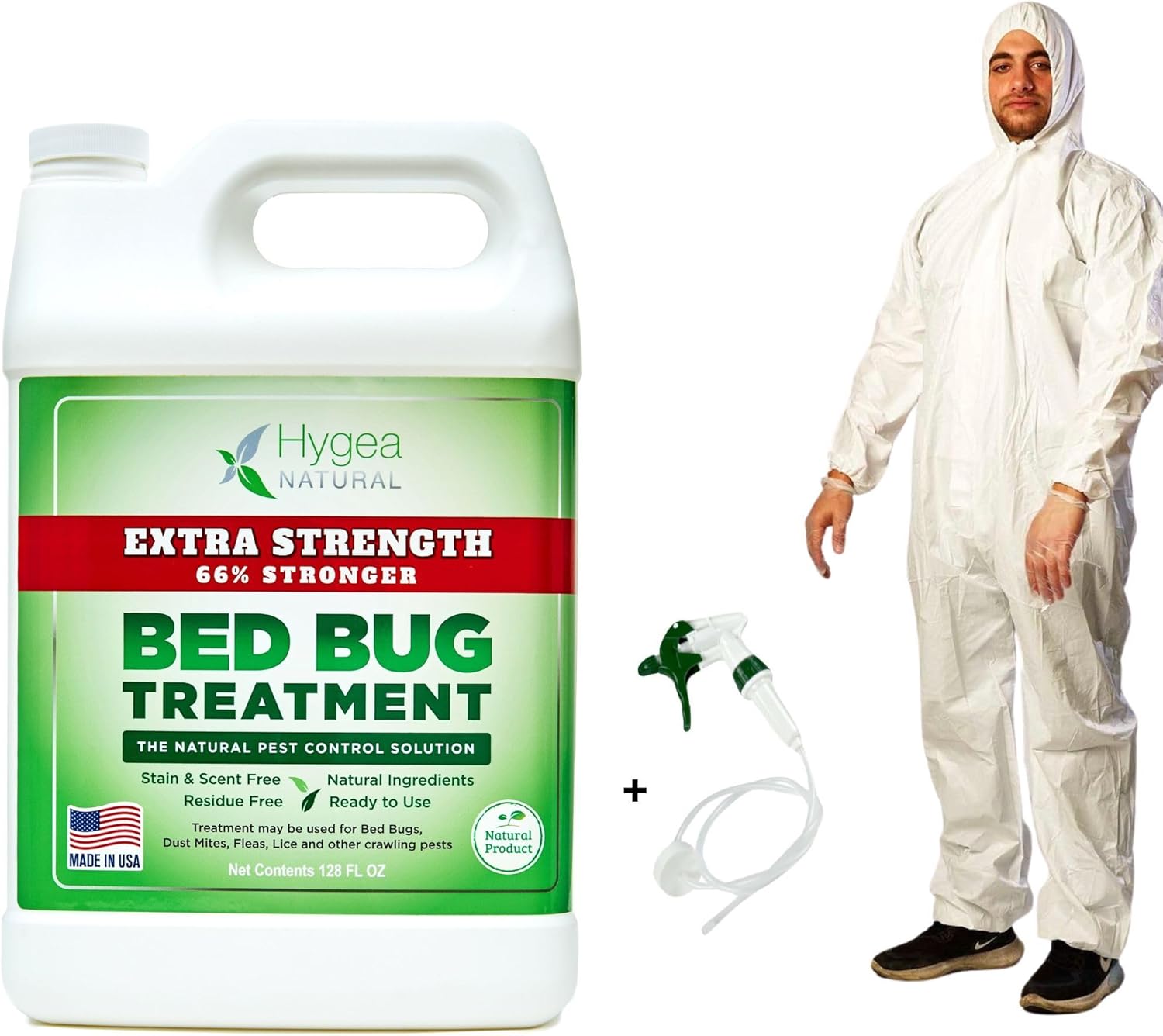
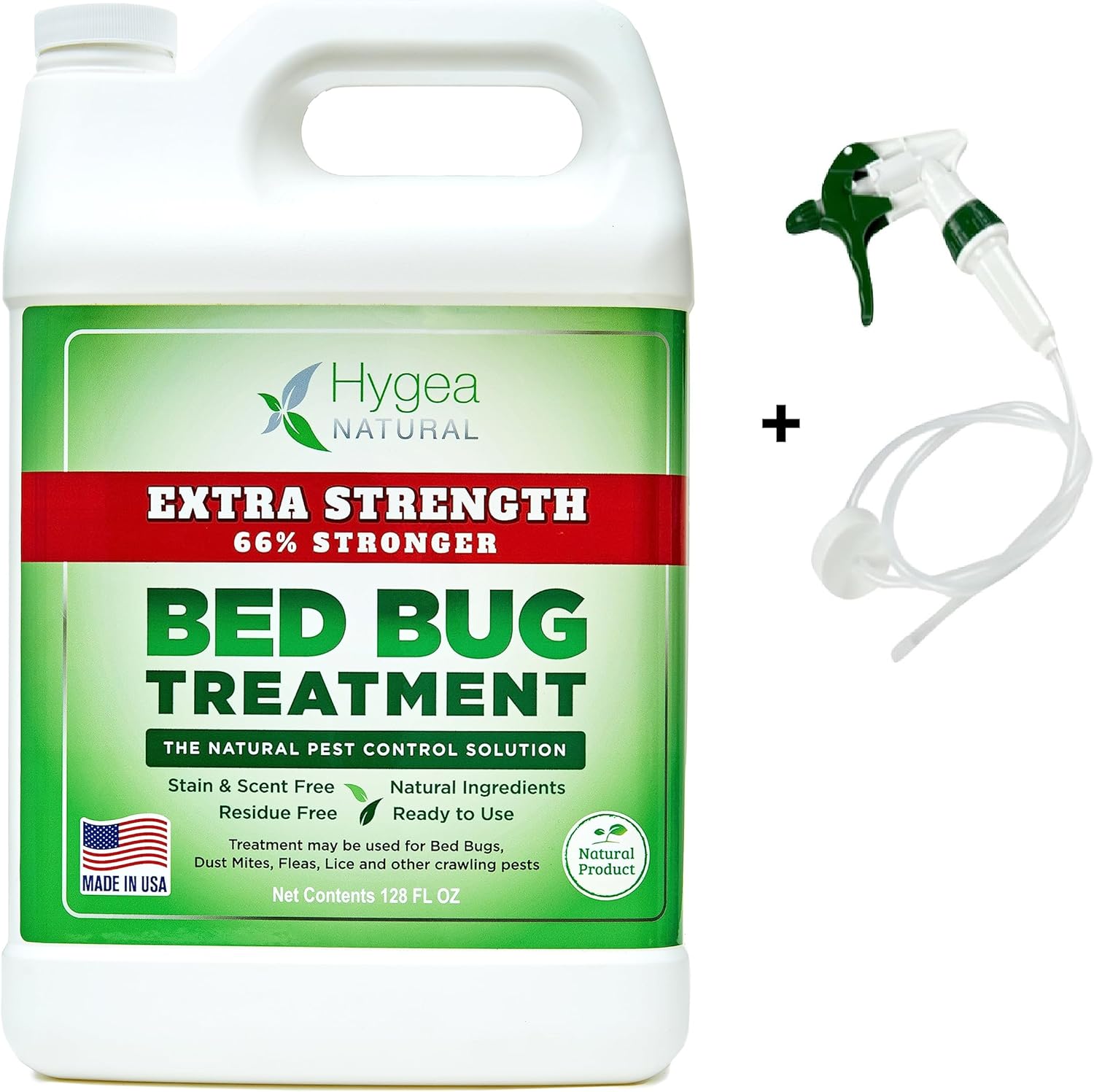
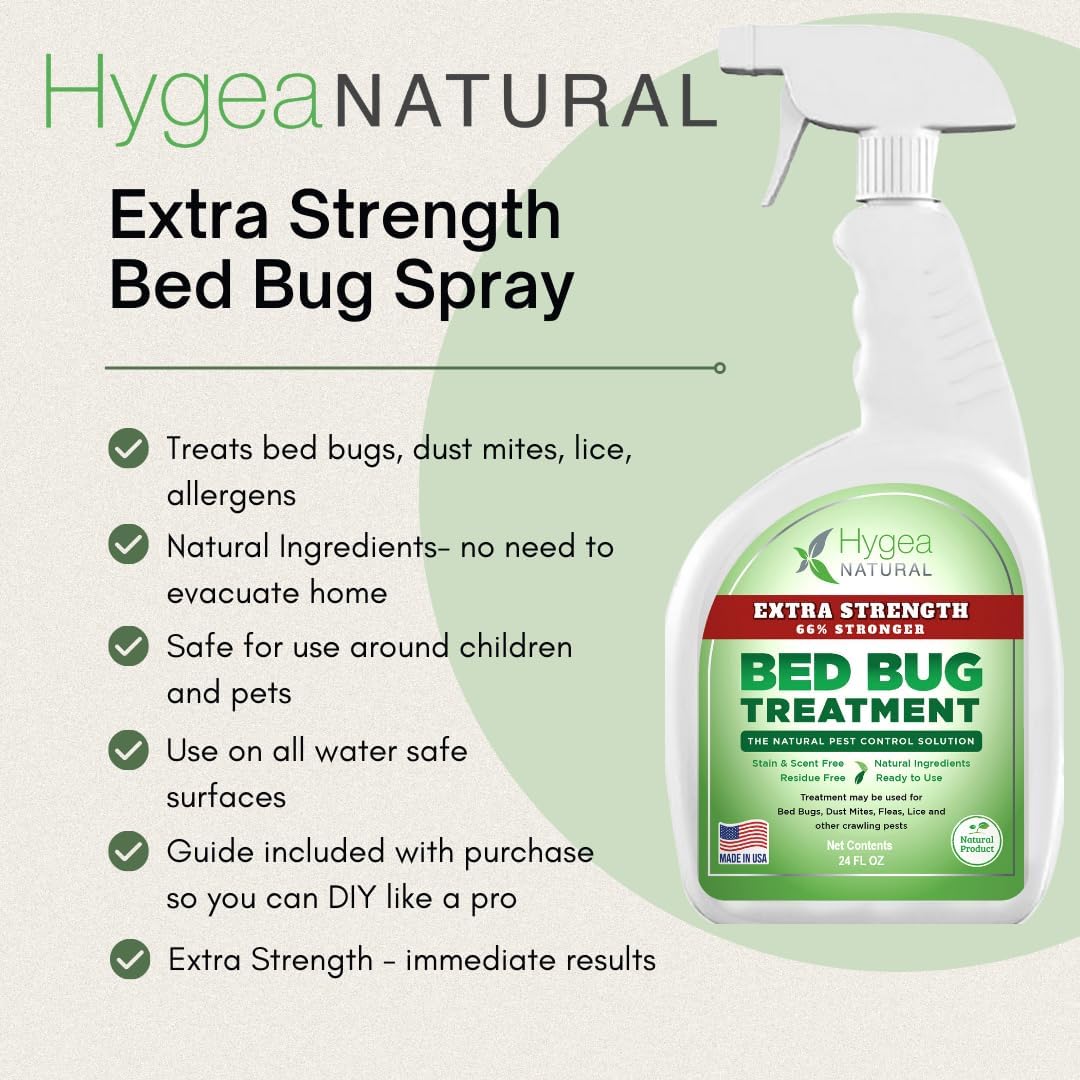
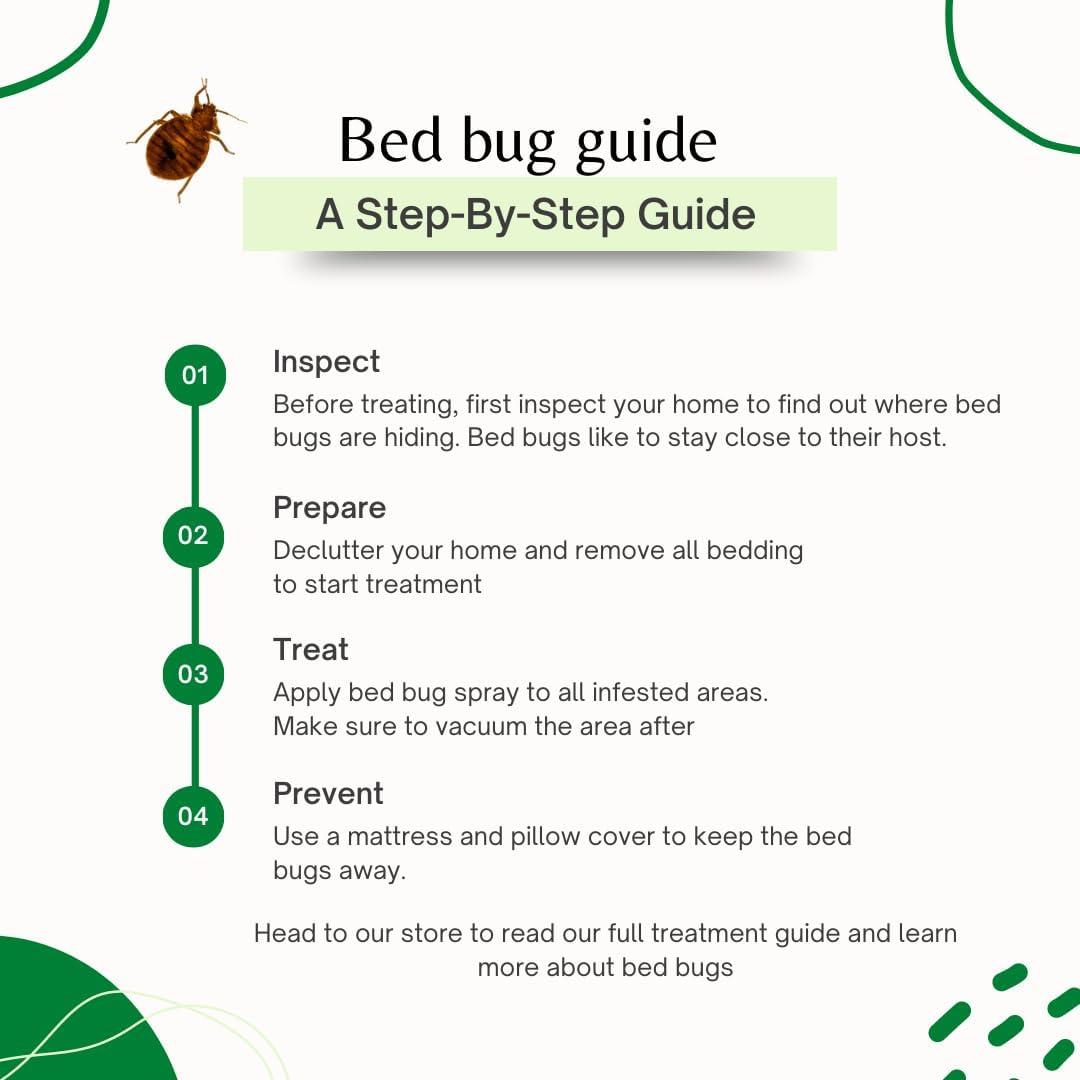
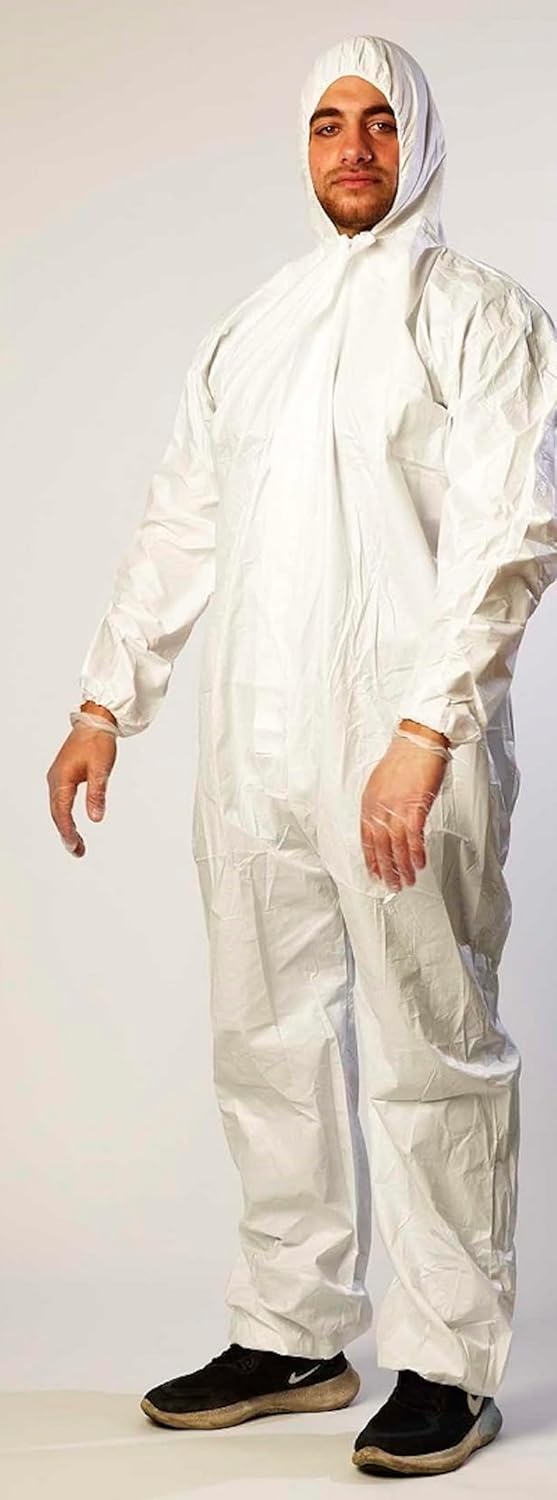
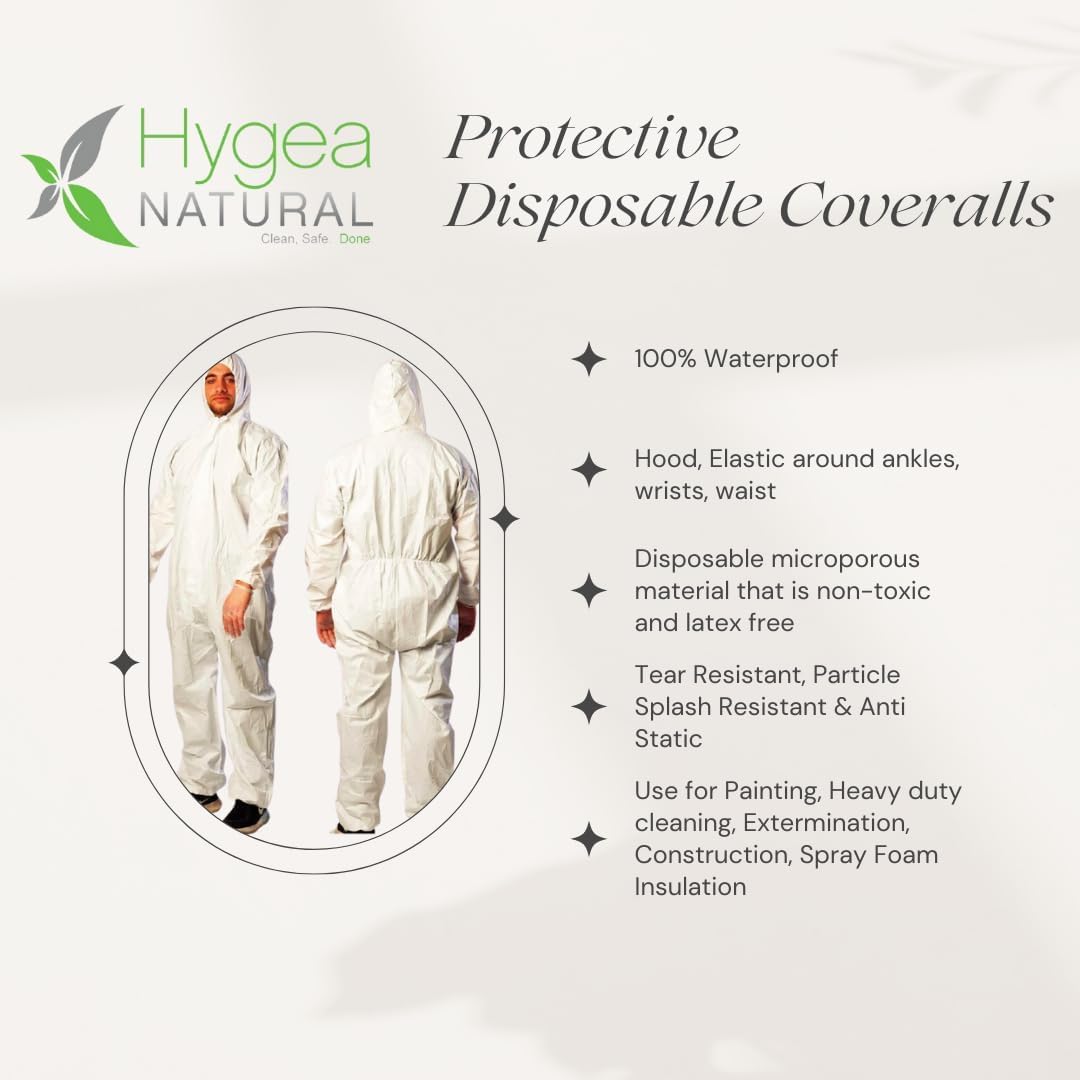

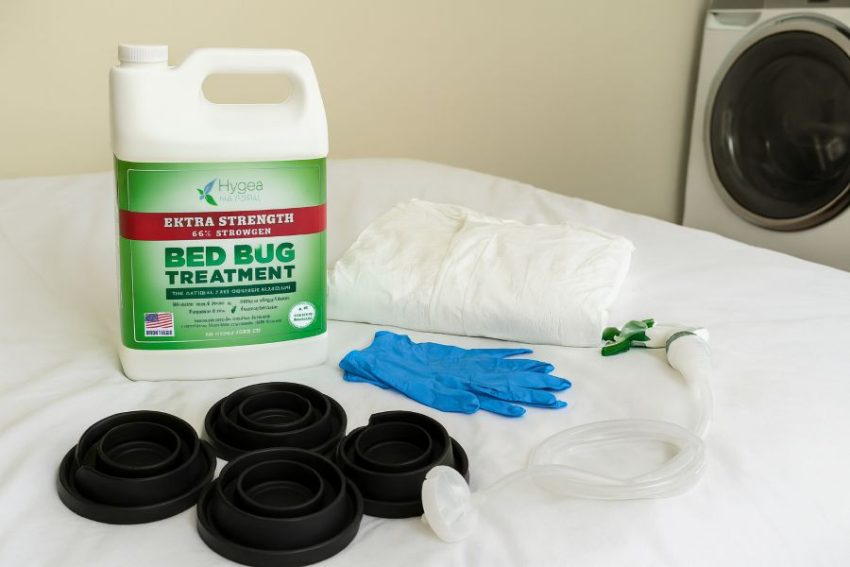
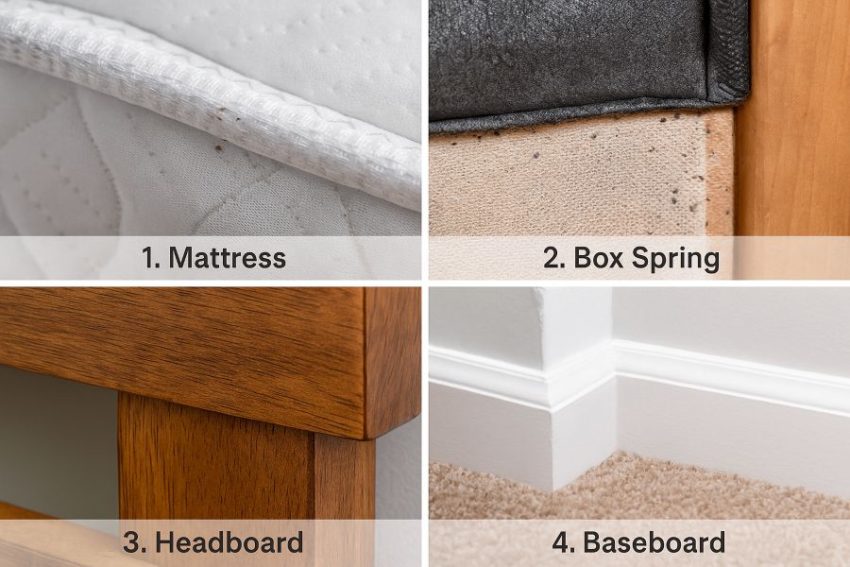
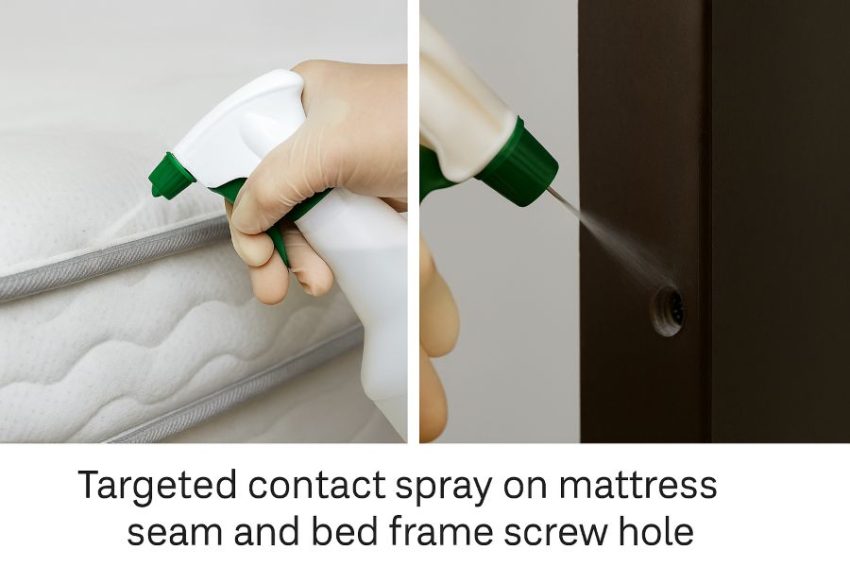
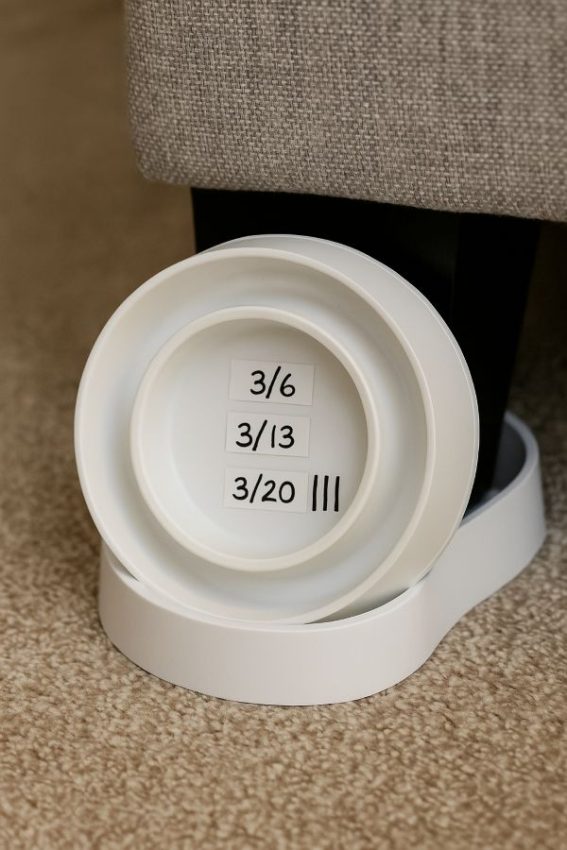
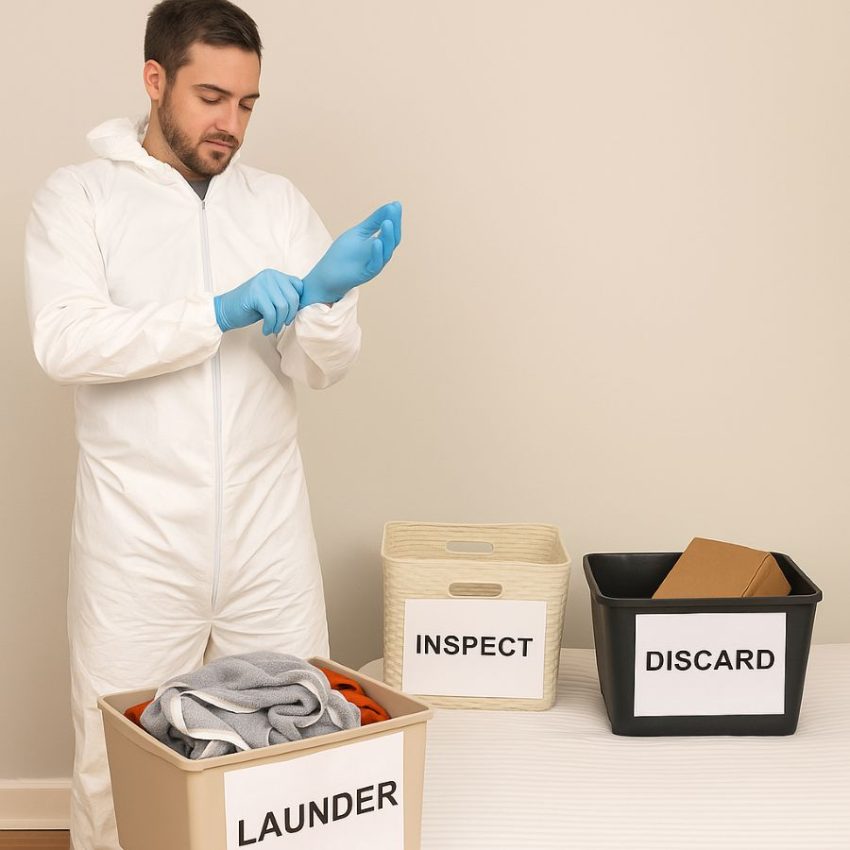
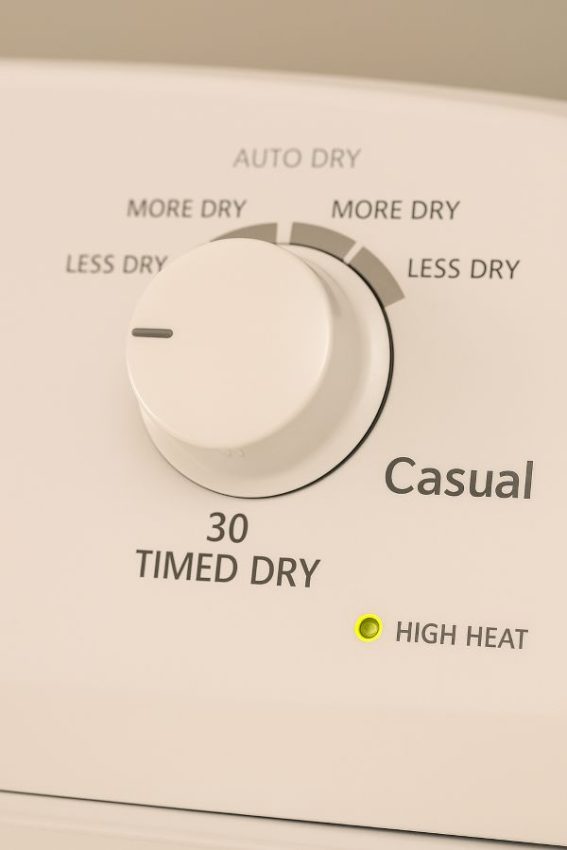
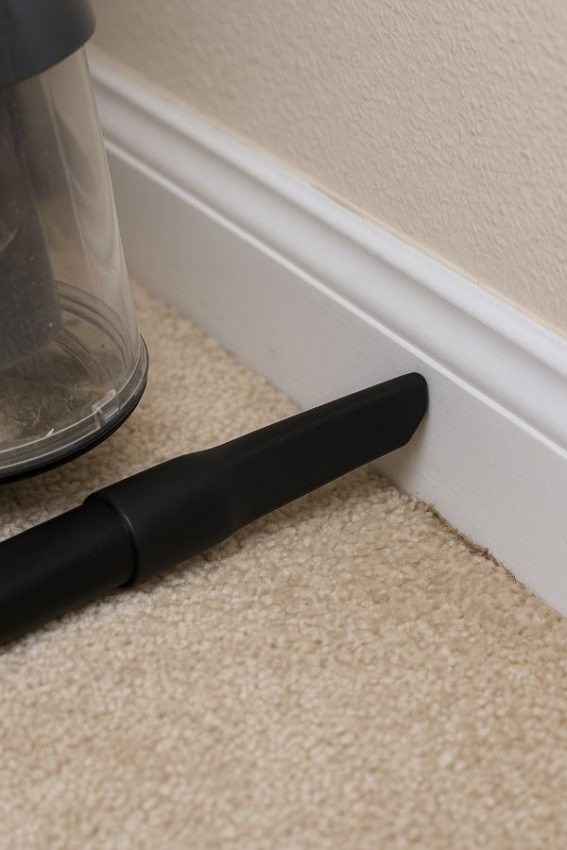
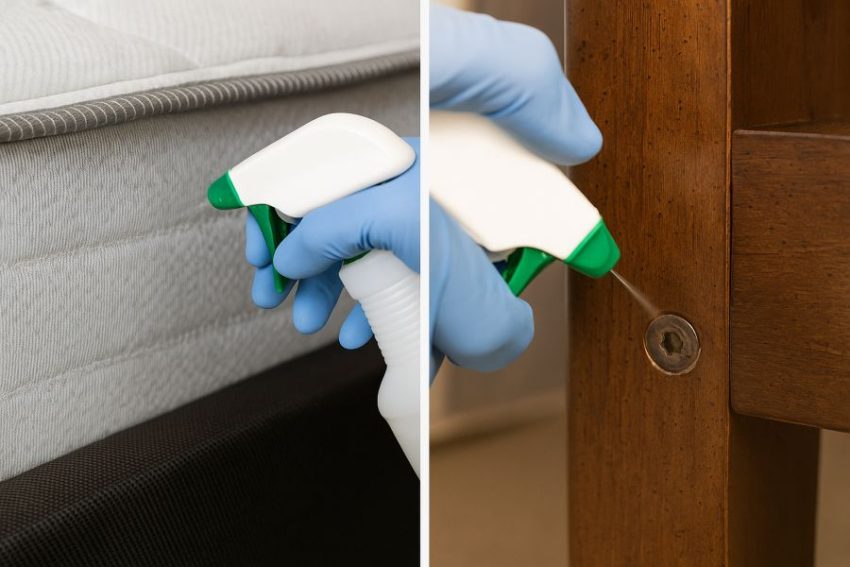
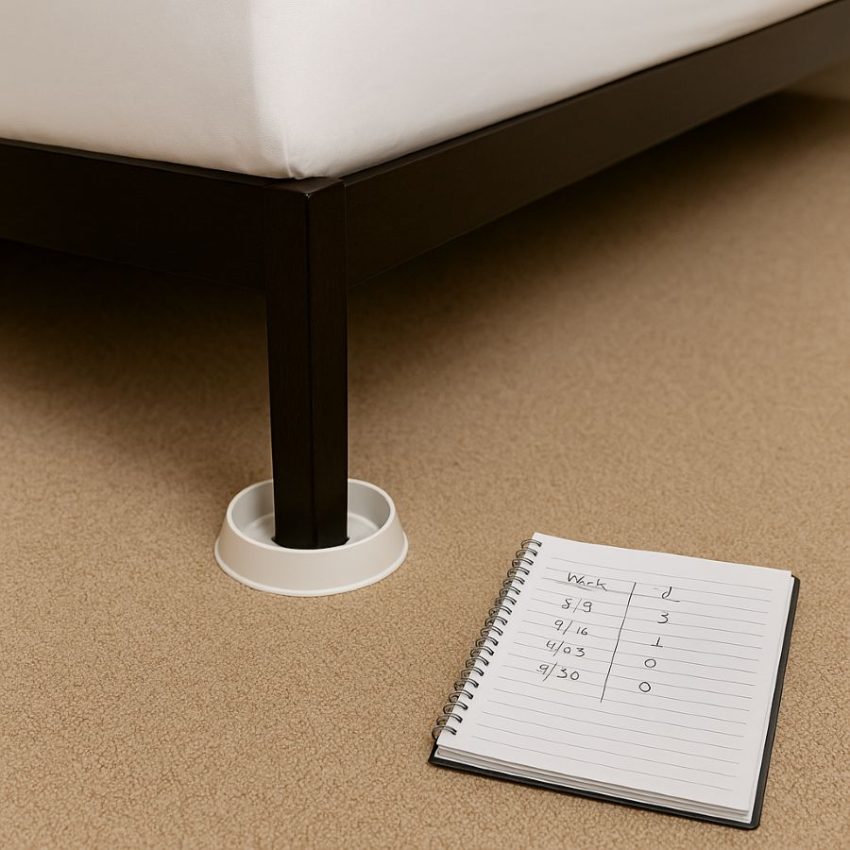
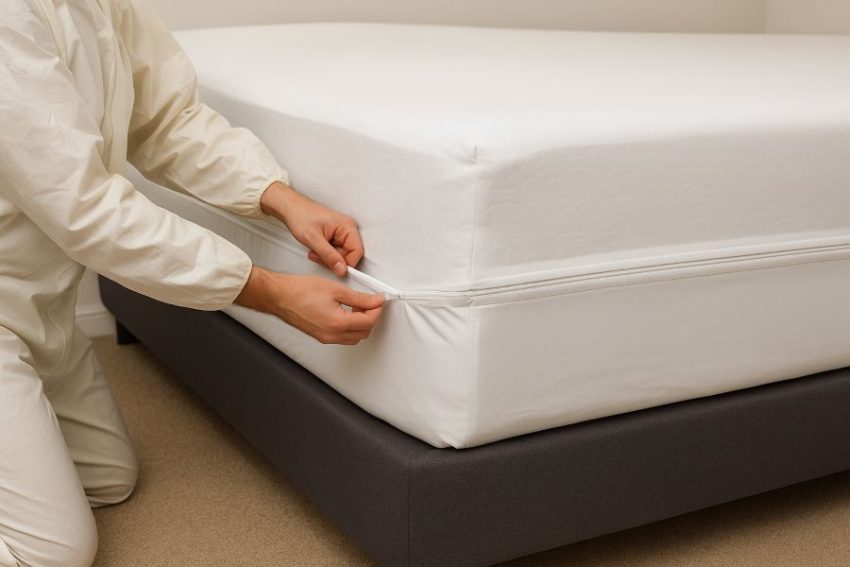

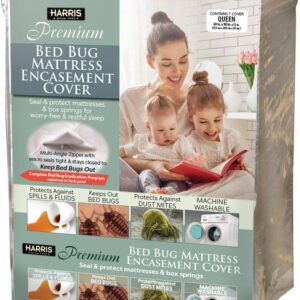


Reviews
There are no reviews yet.